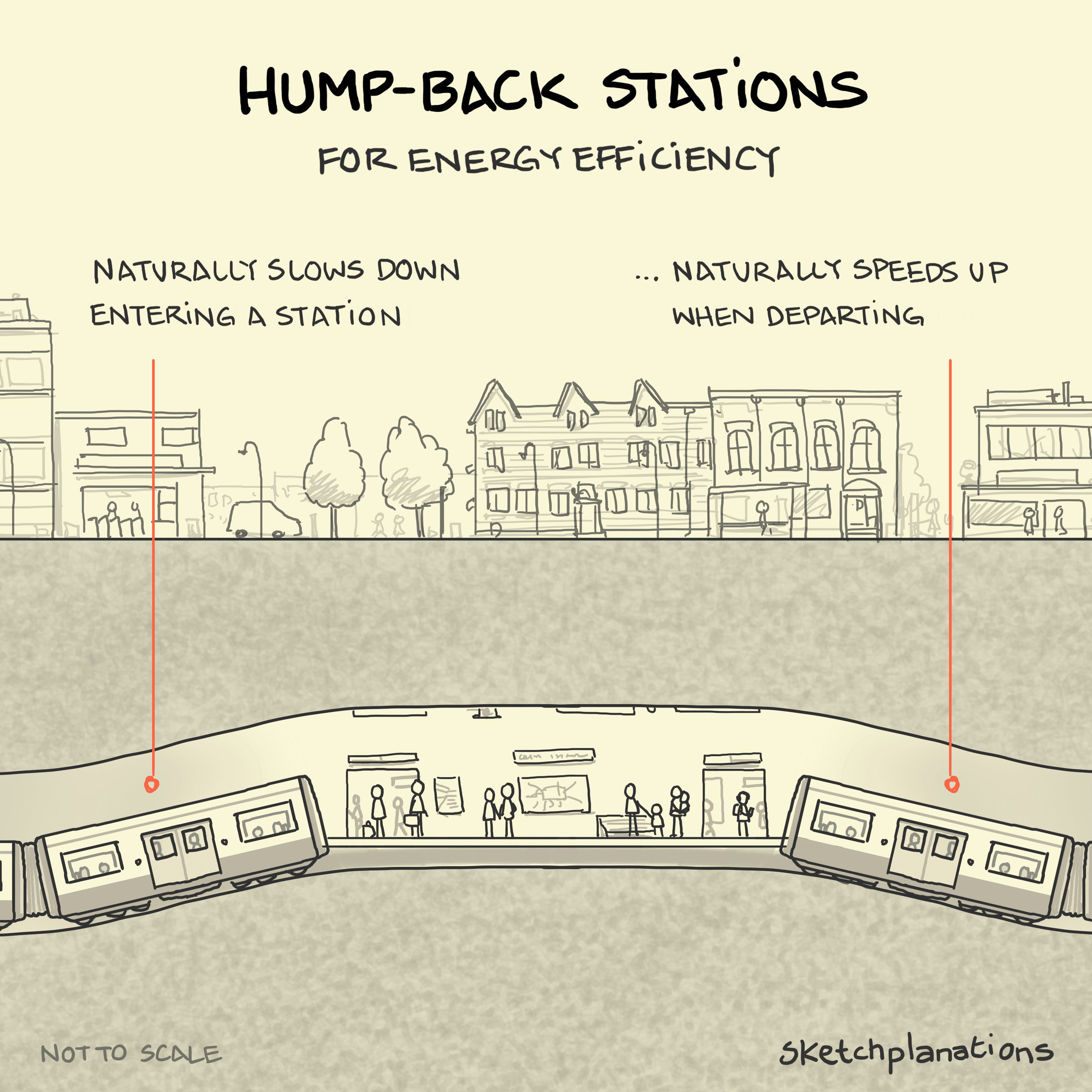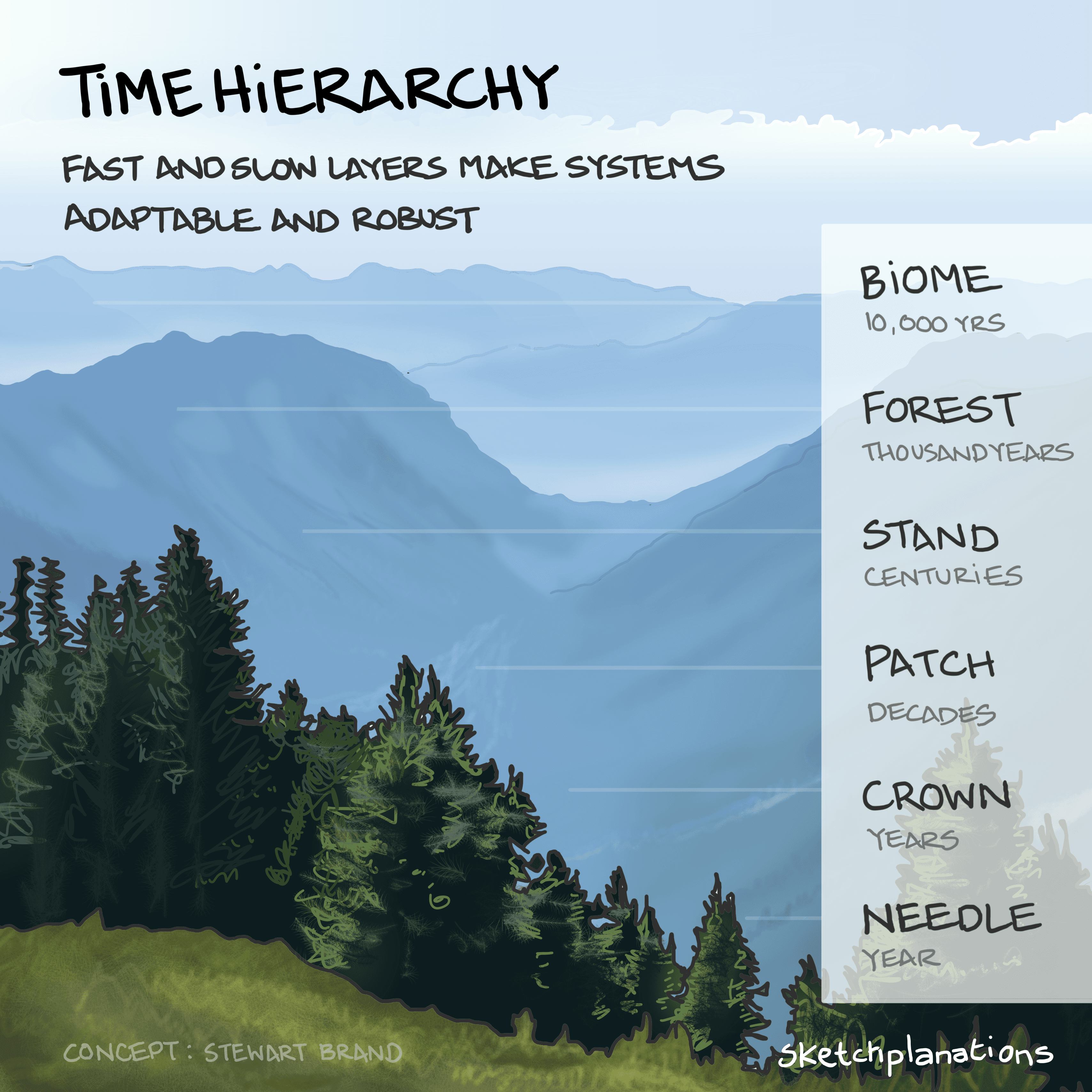Get my new weekly sketch in your inbox
Join over 30,000 people learning something new in a moment each Sunday.

Hump-back stations
A rather clever way of capturing energy as vehicles slow down is to store the energy you'd use in braking as gravitational energy. This way of storing energy is used on a number of central London underground stations by constructing the stations at the top of a small hill in the track. Once built, the hump-back-station design has the handy effect of naturally slowing trains down as they approach a station and naturally accelerating them as they leave a station. Apparently, on London's Victoria line this saves 5% in energy and helps the trains run 9% faster.
You're not always going to be able to put a slope just where you need to slow down, unfortunately. However, it makes a ton of sense for pedestrian crossings where raising the crossing to the level of the payment means pedestrians don't have kerbs to negotiate and cars are naturally encouraged to slow down.
Victoria line data from Sustainable Energy without the Hot Air, by the late David JC MacKay
You’re welcome to use and share this image and text for non-commercial purposes with attribution. Go wild!
See licence

